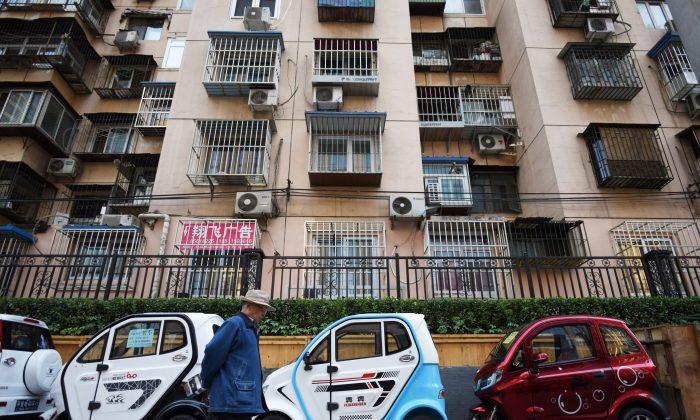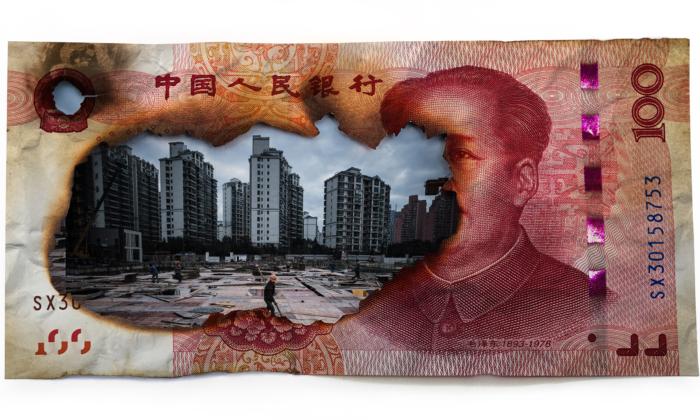China is slowly amassing control over the global supply of lithium, an important mineral in the production supply chain of new technologies.
On May 17, China-based Tianqi Lithium paid more than $4 billion to purchase a sizable stake in Chile’s Sociedad Química y Minera (SQM), one of the world’s biggest producers of lithium. Tianqi bought the stake in SQM from Canadian fertilizer company Nutrien.
Lithium is a critical mineral for production of high-capacity batteries, those powering the world’s smartphones, electric cars, and renewable energy grids. Expected global production of electric cars is expected to dramatically increase demand for lithium. Whoever controls the production of lithium has great influence over the price and supply chain for these emerging technologies.
SQM is strategically important to the global lithium supply because it is perhaps the most efficient producer. There are currently two major methods to produce commercial lithium. The first technique is hard-rock mining, which relies on extracting lithium from mineral ores such as petalite, lepidolite, or spodumene, a process which is costly and time-consuming. The other way is extracting lithium from lithium-rich saline brine, also known as salar.
The Global Lithium Oligopoly
A few major mineral producers control an outsized portion of the global lithium supply, even before Tianqi’s investment in SQM.Charlotte-based chemical producer Albemarle Corp. is the global market leader in lithium production, with an 18 percent share, according to Bloomberg. China’s Jiangxi Ganfeng Lithium Co. is the second biggest at 17 percent, followed by Chile’s SQM with 14 percent. Tianqi is the fourth biggest producer with 12 percent market share. The remaining share is split amongst various smaller producers.
In terms of reserves, the United States Geological Survey estimates that as of 2017, Chile had the world’s biggest lithium reserves at 7.5 million tons, followed by China with 3.2 million tons. Argentina and Australia are numbers three and four, respectively.
But those figures underestimate the concentration of the global lithium supply in the hands of a few interconnected suppliers. The Greenbushes mine in Australia is the world’s single biggest mine deposit. Greenbushes is a joint venture between Albemarle and Tianqi, which by itself was responsible for around 35 percent of the global lithium carbonate production in 2017, according to Bloomberg.
Tianqi also owns a controlling stake in Talison Lithium in Australia, another major global producer, according to Caixin, a China-based business journal.
The two major Chinese producers in the global top five—Ganfeng and Tianqi—are publicly traded private companies. But given they both reside in sectors strategically important to the Made In China 2025 program, their interests will align with the Chinese Communist Party. Jiang Weiping, the Chairman of Tianqi, was a delegate to the 2018 National People’s Congress in March.
Flat Prices and Mixed Forecast
The current market environment is supportive of industry consolidation. After years of increasing lithium spot prices from 2014 to 2017, more recently the price of lithium has flatlined on the expectation of increasing output, and the stock prices of lithium producers has also fallen.The spot price of 99 percent-pure lithium carbonate imported to China has decreased 1.1 percent over the last six months, according to Asianmetal.com, a website that tracks import prices of commodities. The price was up around 1 percent over the past year.
The value of lithium and battery producers has also trended lower over the same period. The price per share of Global X Funds Lithium ETF, which tracks the Solactive Global Lithium Index comprising companies engaged in lithium mining, exploration, and lithium-ion battery production, has decreased almost 11 percent over the last six months ending May 18.
Over the longer term, lithium prices could see even greater decrease due to higher low-cost supply coming online in Chile and Australia.
“We forecast 2018 to be the last year of global lithium market deficit, followed by significant surpluses emerging from 2019 onwards,” Morgan Stanley analysts wrote in a Feb. 26 research note to clients on global lithium prices. “It would take much higher EV (electric vehicle) penetration rates to offset these surpluses and balance the market, in our opinion.”
Lithium prices should peak around $13,000 per ton in 2018, before declining by around 45 percent to $7,000 per ton by 2021, according to Morgan Stanley.
But lithium industry experts believe the demand will continue to outstrip supply. Ken Brinsden, chief executive of Australian lithium miner Pilbara Minerals, told Reuters at a mining conference earlier this year that Wall Street “is grossly underestimating how quickly the market is moving on the demand side.”
Both China and India are increasing mandates for EV adoption, and Europe has recently soured on diesel in favor of electrification. Much of the angst within the United States over EV adoption centers on continued missing production figures at Tesla Inc. But looking beyond Tesla, the fact is every major automaker, from General Motors to Volvo, plans to dramatically increase EV production over the next three years.
China already controls a sizable supply of cobalt, nickel, and other rare earth metals. Its increasing control over the production of lithium brings further unease to the global EV industry, and could trigger a scramble to secure the limited resources. China’s dominance in raw materials for the industry could stunt western automakers’ ability to compete going forward.
Ratings agency Moody’s Investors Service warned earlier this month that an insufficient supply of batteries could prevent Tesla from hitting its monthly production targets. On May 16, Tesla struck a deal with Australian miner Kidman Resources Ltd. to supply the automaker lithium hydroxide for its battery production, though the mine isn’t expected to produce until at least 2021.






Friends Read Free